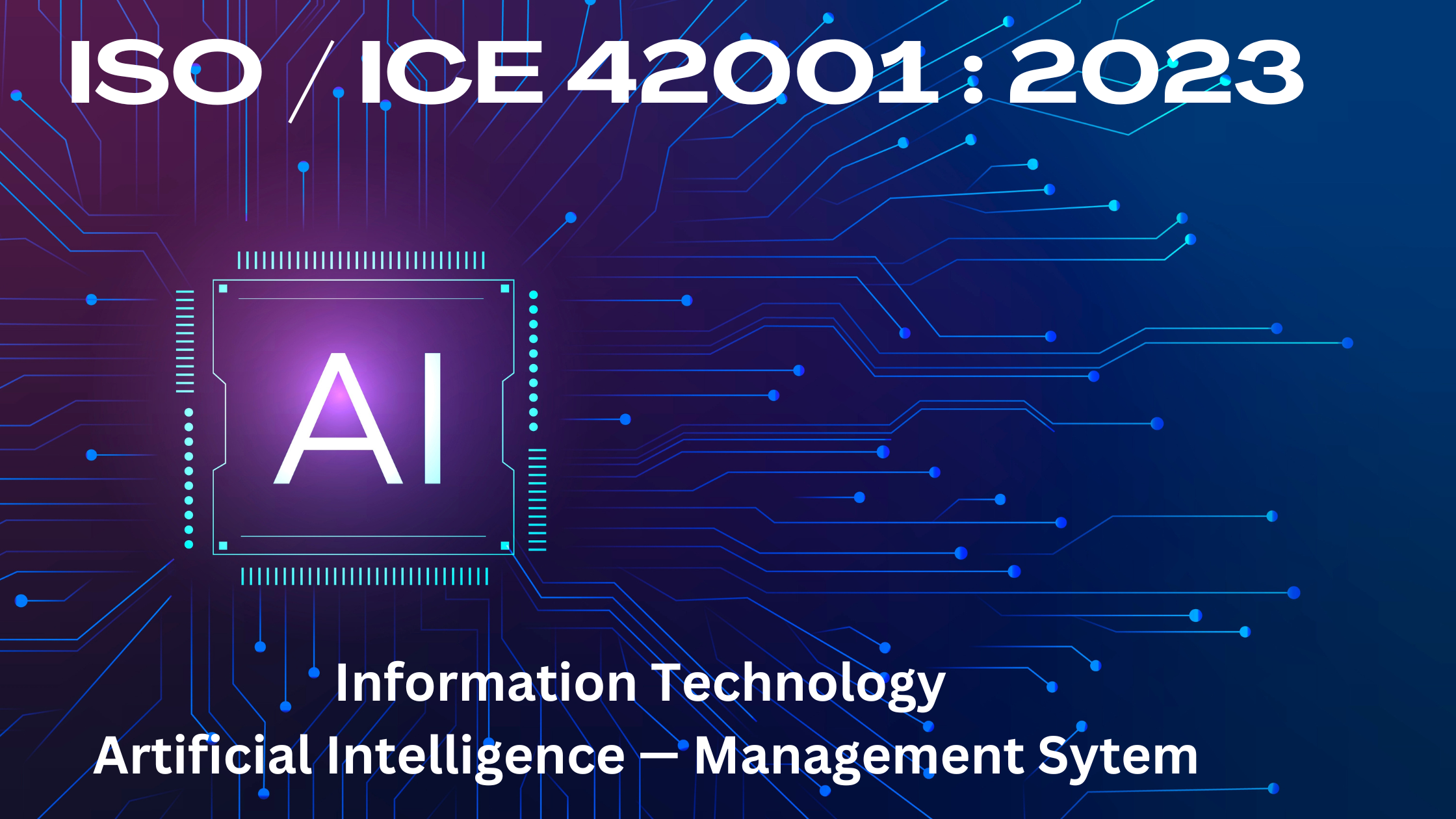
Understanding ISO/IEC 42001
Understanding ISO/IEC 42001
ISO/IEC 42001 is an international standard that outlines the requirements for creating, implementing, maintaining, and continually enhancing an Artificial Intelligence Management System (AIMS). Its rigorous framework aligns with other management systems, particularly the Information Security Management System (ISO/IEC 27001) and the Privacy Information Management System (ISO/IEC 27701).
It is designed for organizations that provide or use AI-based products or services, offering guidance to address AI-related challenges such as ethics, transparency, and continuous learning. This standard ensures responsible development, deployment, and operation of AI, which is crucial for successful AI adoption and broader digital transformation.
ISO/IEC 42001 encompasses all stages of the Plan-Do-Check-Act cycle concerning AI:
- Organizations must define the scope of the AI management system’s applicability, producing a statement that includes the necessary controls.
- The standard mandates that organizations support the AI system development process by upholding high standards for continuous improvement and maintenance, and by monitoring the performance of the AI management system.
- It requires organizations to enhance the system based on prior observations and implement corrective actions accordingly.
Annex A Controls
The Annex A Controls of ISO 42001 are designed to establish a thorough framework for managing organisations’ Artificial Intelligence (AI) systems. Their main goals include promoting ethical AI usage, ensuring comprehensive risk management, and fostering innovation within a structured ethical framework.
ISO 42001 Annex A Controls
| Annex A Control | Description |
| Control A.2 Policies Related to AI | Requires the documentation of a policy for the development or use of AI systems. |
| Control A.3 Internal Organization | Stresses the critical importance of clearly defining and assigning roles and responsibilities within an organization regarding AI systems. |
| Control A.4 Resources for AI Systems | Emphasizes the significance of identifying and documenting critical resources for AI systems. |
| Control A.5 Assessing Impacts of AI Systems | Provides a structured approach for evaluating the potential impact of AI systems on individuals and societies. |
| Control A.6 AI System Life Cycle | Divides the AI system lifecycle into distinct stages, including development, deployment, operation, and monitoring. |
| Control A.7 Data for AI Systems | Highlights the crucial importance of data quality and provenance in AI systems. |
| Control A.8 Information for Interested Parties of AI Systems | Emphasizes that organizations must identify and share essential information about AI systems with users and other interested parties. |
| Control A.9 Use of AI Systems | Requires the definition and documentation of processes for the responsible use of AI systems. |
| Control A.10 Third-Party and Customer Relationships | Stresses the need for clear allocation of responsibilities among the organization, partners, suppliers, customers, and third parties to ensure accountability and effective management throughout the AI system’s lifecycle. |
To progress towards robust AI governance, organizations should:
- Familiarize themselves with the standard to grasp the requirements of ISO/IEC 42001.
- Engage with stakeholders to secure their support.
- Conduct a readiness assessment to compare current AI practices with ISO/IEC 42001 standards.
- Develop a detailed roadmap to implement the requirements effectively and efficiently.
This is where Principle Business Consultants can help you. PBC will guide you in preparing the necessary policies related to ISO 42001, identifying the risks and creating the risk treatment plans, implementing ISO 42001 in your organization, implementing the monitoring and measurement of controls and prepare you for the CB audit.

